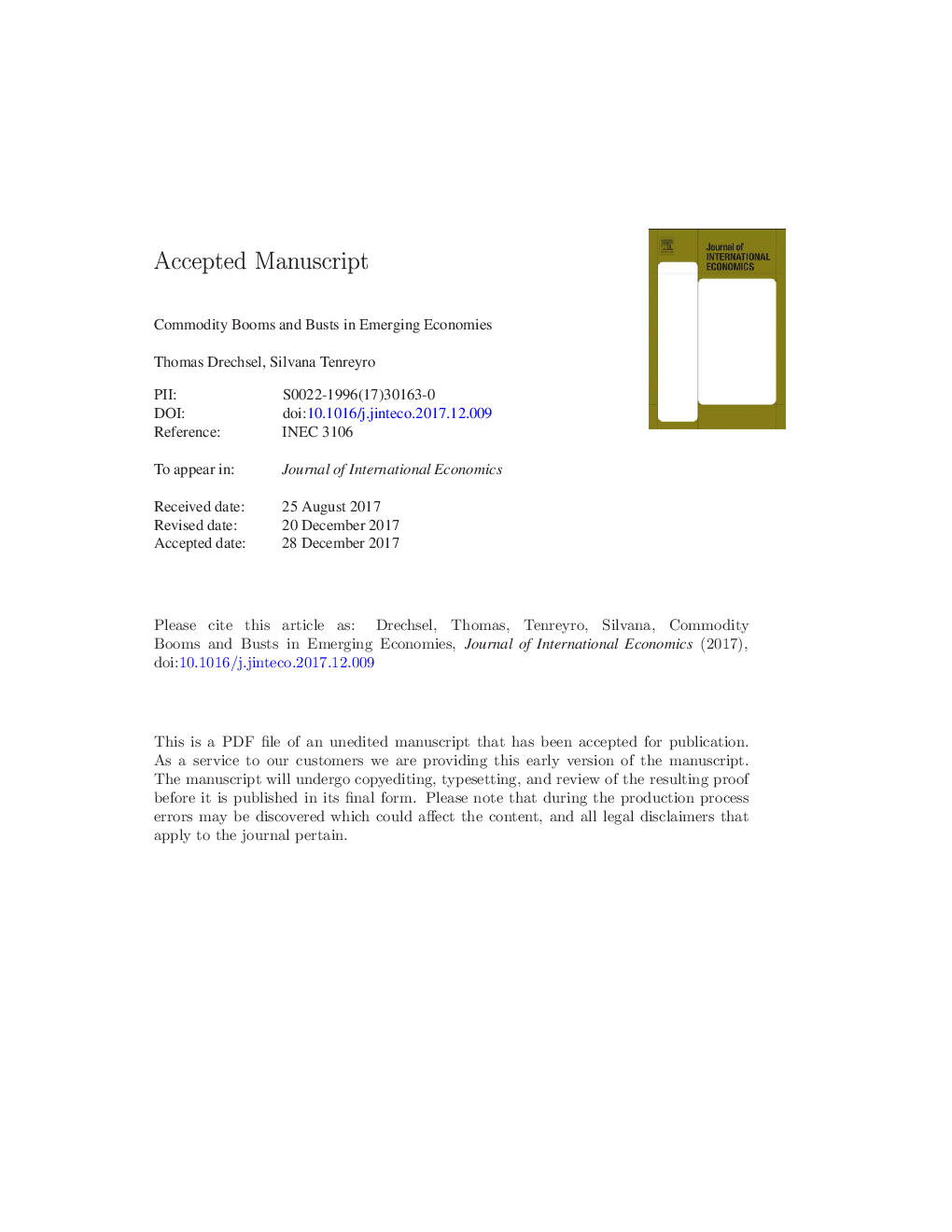| Article ID | Journal | Published Year | Pages | File Type |
|---|---|---|---|---|
| 7363929 | Journal of International Economics | 2018 | 54 Pages |
Abstract
Emerging economies, particularly those dependent on commodity exports, are prone to highly disruptive economic cycles. This paper proposes a small open economy model for a net commodity exporter to quantitatively study the triggers of these cycles. The economy consists of two sectors, one of which produces commodities with prices subject to exogenous international fluctuations. These fluctuations affect both the competitiveness of the economy and its borrowing terms, as higher commodity prices are associated with lower spreads between the country's borrowing rate and world interest rates. Both effects jointly result in strongly positive effects of commodity price increases on GDP, consumption, and investment, and a negative effect on the total trade balance. Furthermore, they generate excess volatility of consumption over output and a large volatility of investment. Besides explicitly incorporating a double role of commodity prices, the model structure nests the various candidate sources of shocks proposed in previous work on emerging economy business cycles. Estimating the model on Argentine data, we find that the contribution of commodity price shocks to fluctuations in post-1950 output growth is in the order of 38%. In addition, commodity prices account for around 42% and 61% of the variation in consumption and investment growth, respectively. We find transitory productivity shocks to be an important driver of output fluctuations, exceeding the contribution of shocks to the trend, which, though smaller, is not negligible.
Related Topics
Social Sciences and Humanities
Economics, Econometrics and Finance
Economics and Econometrics
Authors
Thomas Drechsel, Silvana Tenreyro,
